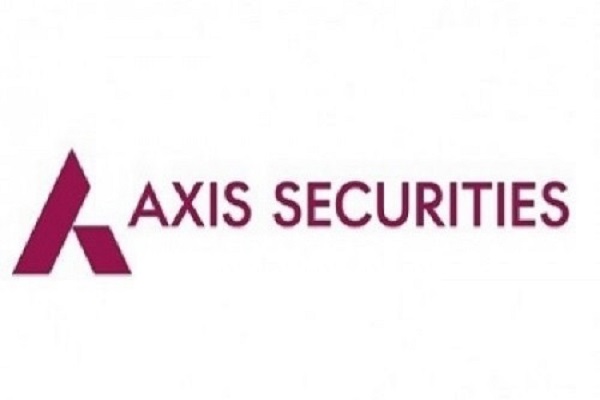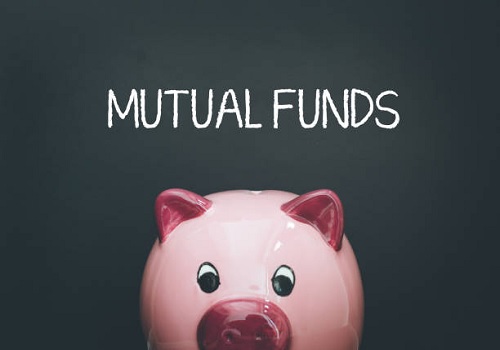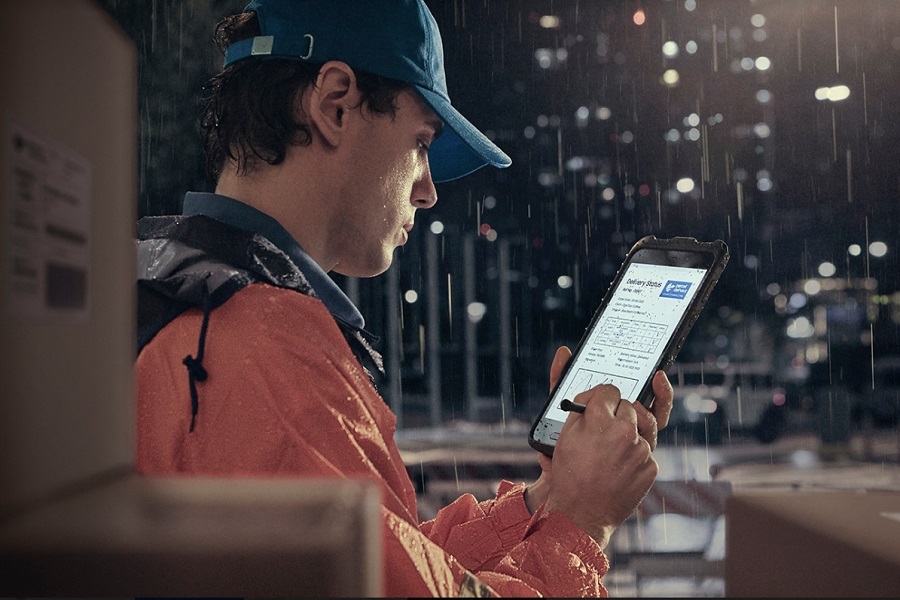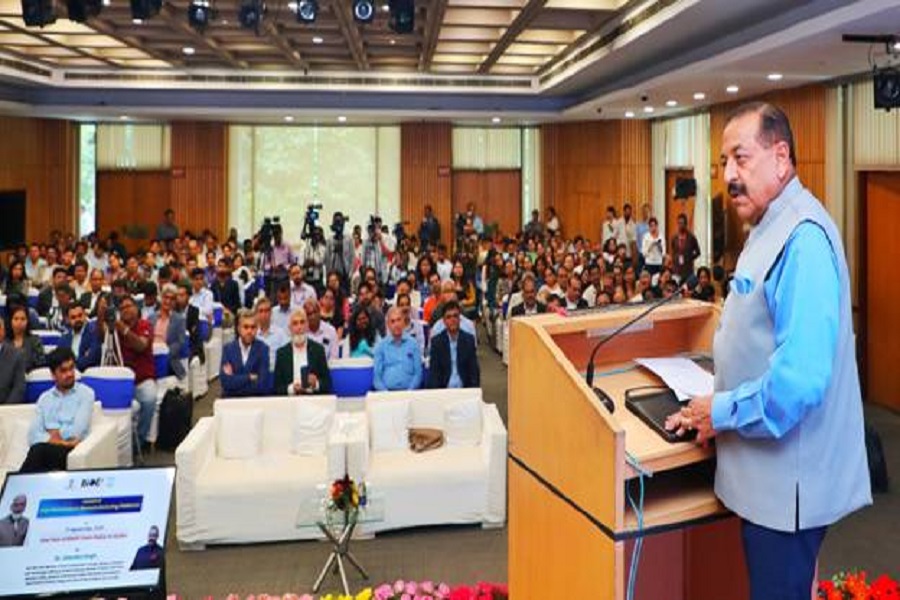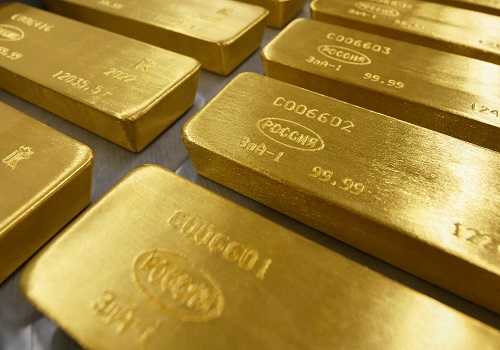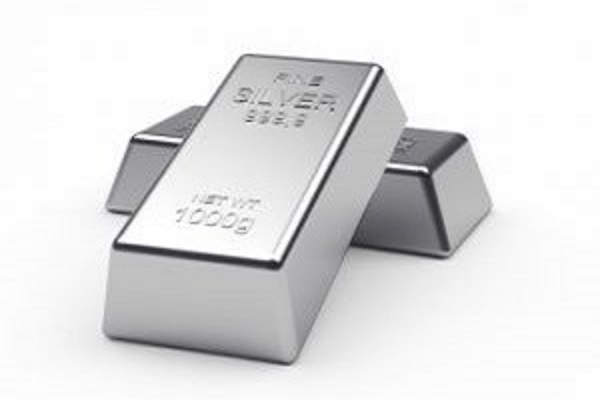Gold prices saw a modest increase of 0.25% yesterday - Kedia Advisory

Gold
Gold prices saw a modest increase of 0.25% yesterday, settling at 65,750 rupees per ounce as traders eagerly awaited the U.S. Federal Reserve's monetary policy decision and Fed Chair Jerome Powell's remarks for insights into the prospects of rate cuts. As anticipated, the Federal Reserve maintained interest rates within the target range of 5.25%-5.5% but indicated its intention to implement three rate cuts before the end of the year. Additionally, the Committee revised its forecast for this year's real GDP growth upward to 2.1%, a significant increase from the previous estimate of 1.4% in December. Despite the outlook for economic growth, gold continued to receive support from persistent safe-haven demand and central bank purchases amid geopolitical tensions. China's central bank has consistently added gold to its reserves for 16 consecutive months, underscoring the continued appeal of the precious metal as a hedge against uncertainty. However, muted activity in the physical gold market tempered some of the bullish sentiment. Swiss gold exports in February declined month-on-month from their eight-year high, although exports to India rose notably as local jewellers prepared for the wedding season. In January, the Reserve Bank of India (RBI) made its largest gold purchase since July 2022, acquiring 8.7 tonnes of gold. From a technical perspective, the gold market experienced short covering, with a drop in open interest by -3.04% alongside a price increase of 167 rupees. Currently, gold finds support at 65,575 rupees, with potential downside testing at 65,400 rupees. Resistance levels are likely to be encountered at 65,890 rupees, with a breakout potentially leading to prices testing 66,030 rupees.
Trading Ideas:
* Gold trading range for the day is 65400-66030.
* Gold rallies to record high as Fed sticks to 2024 rate-cut view
* Fed left the interest rates unchanged and signaled that it still plans three rate cuts before the end of the year
* The Bank of Japan ended its eight years of negative interest rates and other remnants of its unorthodox policy.
Silver
Silver prices closed slightly higher by 0.03% yesterday, settling at 75,313 rupees per ounce as the dollar maintained its strength and Treasury yields remained near four-month highs ahead of Wednesday's FOMC rate decision. The recent readings of consumer and producer price inflation, which surpassed expectations, have tempered optimism regarding the likelihood of the Fed's first rate cut in June. Despite expectations of a rate cut, the Federal Reserve kept interest rates unchanged within the target range of 5.25%-5.5%, signaling its intention for three rate cuts before the year's end. Additionally, the Committee notably raised its forecast for this year's real GDP growth to 2.1%, reflecting improved economic prospects. The U.S. housing sector showed signs of stabilization, with residential construction surging by 10.7% last month to a 1.521 million annualized rate, surpassing January's revised rate. Building permits also saw a significant increase, rising by 1.9% to a seasonally adjusted annual rate of 1.518 million in February, marking the highest level since August. The rise in building permits was supported by approvals for both multi-segment and single-family housing, indicating positive momentum in the housing market. Overall, silver's performance reflects a delicate balance between macroeconomic factors, including monetary policy decisions and economic indicators, and technical considerations. Despite the strength of the dollar and Treasury yields, silver prices managed to hold steady, buoyed by expectations of continued monetary support and positive developments in the housing sector. From a technical standpoint, the silver market experienced short covering, with a drop in open interest by -1.27% alongside a price increase of 26 rupees. Currently, silver finds support at 74,980 rupees, with potential downside testing at 74,645 rupees. Resistance levels are likely to be encountered at 75,575 rupees, with a breakout potentially leading to prices testing 75,835 rupees.
Trading Ideas:
* Silver trading range for the day is 74645-75835.
* Silver prices settled flat as the dollar remained supportive
* The U.S. housing sector shows some signs of stabilization as construction of new homes picks up.
* Building permits in US surged by 1.9% to a seasonally adjusted annual rate of 1.518 million in February 2024
Crude oil
Crude oil prices experienced a decline of -2.02% yesterday, settling at 6,748 rupees per barrel, as investors opted to take profits following a recent strong rally fueled by concerns over supply disruptions amid Ukrainian drone attacks on Russian refineries. Additionally, Iraq's announcement of plans to reduce crude exports and Saudi Arabia's second consecutive monthly decline in exports contributed to the market sentiment. Saudi Arabia, the world's largest oil exporter, saw a modest increase in crude production in January but experienced a decline in exports, aligning with OPEC+ agreements to curb output. The Kingdom's decision to comply with production quotas aimed at stabilizing global oil markets has been pivotal in balancing supply and demand dynamics. In the US, crude oil inventories declined by 1.519 million barrels in the week ending March 15th, 2024, marking the second consecutive weekly decrease. This came after five consecutive weeks of inventory builds, defying market expectations of a rise of 0.7 million barrels. The decline in US crude stocks reflects a tightening supply scenario, further supporting oil prices. From a technical perspective, the crude oil market witnessed long liquidation, with a significant drop in open interest by -28.57% alongside a price decrease of -139 rupees. Currently, crude oil finds support at 6,696 rupees, with potential downside testing at 6,643 rupees. Resistance levels are likely to be encountered at 6,837 rupees, with a breakout potentially leading to prices testing 6,925 rupees.
Trading Ideas:
* Crudeoil trading range for the day is 6643-6925.
* Crude oil dropped as investors took some profits after a strong run-up in prices
* Saudi Arabia’s crude production rose to 8.96 mbpd in January: JODI
* Crude oil inventories in the US fell by 1.952 million barrels in the week ended March 15 – EIA
Natural gas
Natural gas prices faced a decline of -1.87% yesterday, settling at 141.9 rupees, primarily driven by concerns over elevated gas storage levels in the US. Despite a larger-than-expected withdrawal reported in the week ending March 8th, gas storage remains 37% higher than the average for this time of year. The ongoing repairs at the Freeport LNG terminal, expected to continue until April, are further contributing to the surplus supply within the domestic market. Adding to the supply-side dynamics, the Energy Information Administration (EIA) anticipates a slight decline in natural gas production for the remainder of the year, influenced by lower prices. Major producers like CNX Resources, EQT, and Chesapeake Energy are deliberately cutting production to manage market conditions, which could potentially impact supply levels in the coming months. Looking ahead, U.S. natural gas prices at the Henry Hub benchmark are projected to average $2.81 per million British thermal units (mmBtu) in 2024, the highest since 2022, before rising to $3.96 in 2025. Despite the recent withdrawal, US natural gas storage is on track to end the November-March winter withdrawal season at 2.050 trillion cubic feet (tcf) on March 31st, the highest since 2017. From a technical standpoint, the natural gas market observed long liquidation, with a notable drop in open interest by -14.79% alongside a price decrease of -2.7 rupees. Currently, natural gas finds support at 139.8 rupees, with potential downside testing at 137.6 rupees. Resistance levels are likely to be encountered at 145.2 rupees, with a move above potentially leading to prices testing 148.4 rupees.
Trading Ideas:
* Naturalgas trading range for the day is 137.6-148.4.
* Natural gas dropped as gas storage levels in the US are 37% higher than average for this time of year.
* Repairs at the Freeport LNG terminal are set to continue until April, resulting in a greater portion of supply remaining within the domestic market.
* U.S. natural gas prices at the Henry Hub benchmark will average $2.81 mmBtu in 2024, their highest since 2022.
Copper
Copper prices experienced a decline of -0.37% yesterday, settling at 753.6 rupees, as concerns surrounding the strength of the Chinese economy and its debt-laden property sector resurfaced among investors. Despite an unexpected acceleration in China’s industrial production in February, worries persisted regarding the demand for manufactured goods and new homes, dampening expectations for commodity buying in the country. This sentiment was underscored by a significant 20% surge in Chinese deliverable copper inventories during the week ending March 15th, indicating substantial seasonal restocking activities and aligned with a recent decline in the Yanghsan copper premium. Nevertheless, copper futures managed to maintain a 5% increase for the month, supported by smelters’ strategic decision to curtail production at unprofitable facilities due to raw material shortages. In China, refined copper production for January and February combined rose by 10.7% year-on-year to approximately 2.22 million metric tons, according to data from the National Bureau of Statistics. Meanwhile, in Peru, copper production slipped by 1.2% in January compared to the same period last year, totaling around 205,375 metric tons. This decline was attributed to reduced output from key mines such as MMG's Las Bambas and Freeport-McMoRan's Cerro Verde, registering a 17% and 13.4% drop, respectively. From a technical standpoint, the copper market observed long liquidation, evidenced by a significant drop in open interest by -28.46% alongside a price decrease of -2.8 rupees. Currently, copper finds support at 750.3 rupees, with potential downside testing at 747 rupees. Resistance levels are anticipated at 757.4 rupees, with a breakout potentially leading to prices testing 761.2 rupees.
Trading Ideas:
* Copper trading range for the day is 747-761.2.
* Copper dropped amid looming concerns over the strength of the Chinese economy
* Chinese deliverable copper inventories on the week ending March 15th, magnifying seasonal restocking
* China's refined copper production in January and February rose 10.7% from the prior year
Zinc
Zinc prices saw a modest increase of 0.34% yesterday, settling at 218.7 rupees, as Peruvian zinc miner Volcan, backed by Glencore Plc, announced a temporary halt in operations at three of its mines in Peru. This decision comes as the company works on updating an operating permit for its Rumichaca tailings dam. The affected mines include San Cristobal, Carahuacra, and Ticlio, located in the central region of the country, with operations expected to be suspended for up to 30 days. The global zinc market shifted to a surplus of 58,700 metric tons in January, reversing from a deficit of 46,800 tons the previous month, according to data from the International Lead and Zinc Study Group (ILZSG). This surplus contrasts with January 2023 when the market reported a surplus of 54,000 tons. Glencore recently initiated the ramp-up of production at its Nordenham zinc smelter in Germany, which had been under care and maintenance for over a year. The resumption of operations at Nordenham is significant, considering its annual production capacity of about 165,000 tonnes of zinc and zinc alloys. Meanwhile, the People's Bank of China opted to keep lending rates unchanged at the March fixing, in line with expectations. The one-year loan prime rate (LPR), a key benchmark for corporate and household loans, remained steady at 3.45%. This decision reflects the central bank's stance amid evolving economic conditions and its efforts to maintain stability in the financial sector. From a technical standpoint, the zinc market observed short covering, with a notable drop in open interest by -13.54% alongside a marginal price increase of 0.75 rupees. Currently, zinc finds support at 217.8 rupees, with potential downside testing at 216.9 rupees. Resistance levels are anticipated at 219.5 rupees, with a breakout potentially leading to prices testing 220.3 rupees.
Trading Ideas:
* Zinc trading range for the day is 216.9-220.3.
* Zinc gains as Glencore backed Peru miner Volcan halts three mines over permits
* Global zinc market swings to surplus in January, ILZSG says
* PBOC kept lending rates unchanged at the March fixing, as widely expected.
Aluminium
Aluminium prices experienced a marginal increase of 0.1% yesterday, settling at 204.05 rupees, driven by several factors influencing the market dynamics. One significant factor was the slower pace of aluminium ingot inventory growth, suggesting a potential peak in inventory levels. Additionally, aluminium smelters in China's Yunnan province resumed operations, supported by improved power supply policies. These policies are anticipated to lead to an annual output recovery of approximately 500,000 tons, following a period of reduced production due to power supply constraints during the dry season last November. On the global front, primary aluminium output in February registered a 3.9% year-on-year increase, reaching 5.544 million tonnes, according to data from the International Aluminium Institute (IAI). This uptick in output reflects the ongoing recovery and expansion of the aluminium industry worldwide. In monetary policy news, the People's Bank of China (PBoC) opted to keep lending rates unchanged at the March fixing, in line with expectations. The one-year loan prime rate (LPR) and the five-year rate, both crucial benchmarks for corporate and household loans, remained steady at record lows. This decision comes amidst efforts by the central bank to stimulate economic growth amid challenges in the property sector and subdued consumer confidence. The PBoC also indicated the possibility of further cuts in banks' reserve requirement ratios (RRR) and emphasized its commitment to utilizing monetary policy tools to stabilize consumer prices. From a technical standpoint, the aluminium market observed short covering, with a notable drop in open interest by -21.76% alongside a modest price increase of 0.2 rupees. Currently, aluminium finds support at 203.5 rupees, with potential downside testing at 203 rupees. Resistance levels are anticipated at 204.5 rupees, with a breakout potentially leading to prices testing 205 rupees.
Trading Ideas:
* Aluminium trading range for the day is 203-205.
* Aluminium gains as aluminum ingot inventory rose at a slower pace.
* Global aluminium output rises 3.9% year on year in February – IAI
* Aluminum smelters in China’s Yunnan province resumed smelting due to improved power supply policies
Cotton
Cotton prices experienced a decline of 0.39% yesterday, settling at 60640 rupees, driven by several factors affecting the global cotton market. The Cotton Association of India (CAI) revised its cotton production estimates upwards for the current season, projecting an increase to 309.70 lakh bales, contributing to increased supply expectations. Similarly, the Cotton Corporation of India (CCI) also raised its crop production estimates, further adding to the anticipated surplus in the market. Moreover, the International Cotton Exchange (ICE) witnessed a drop in prices due to lower demand from mills alongside the increased supply outlook. Notably, Cotton Australia revised its production estimate upwards following favorable weather conditions, contributing to the global surplus. In the United States, cotton production forecasts for the current season have been reduced based on recent reports, leading to lower ending stocks. Despite the increase in global cotton production, the Southern India Mills’ Association (SIMA) urged textile mills not to panic-buy cotton due to recent price hikes. Prices of domestic cotton witnessed a significant increase, prompting concerns within the industry. However, the committee on Cotton Production and Consumption estimated domestic consumption to be in line with production figures. Technically, the cotton market observed long liquidation, with a drop in open interest by 11.2% and prices decreasing by 240 rupees. Currently, Cottoncandy finds support at 60420 rupees, with a potential downside test at 60210 rupees. Resistance levels are anticipated at 60880 rupees, with a move above potentially leading to prices testing 61130 rupees.
Trading Ideas:
* Cottoncandy trading range for the day is 60210-61130.
* Cotton dropped after CAI revised production estimates upwards to 309.70 lakh bales
* CCPC raised crop production for the current season to 323.11 lakh bales
* Cotton Australia raised its estimate for Australian production this year to "at least" 4.5 million bales
* In Rajkot, a major spot market, the price ended at 29227.7 Rupees dropped by -0.4 percent.
Turmeric
Turmeric prices exhibited a positive trend yesterday, settling up by 1.27% at 17736 rupees, primarily driven by below-normal supplies and robust festive demand. The market saw an active buying sentiment supported by the anticipation of lower production and tight supply conditions. Arrivals in major APMC markets for March 2024 were significantly lower compared to the previous year, indicating supply constraints that are likely to persist in the near term. The seasonal pattern of turmeric prices suggests a tendency for higher prices during March due to increased festive buying, further reinforcing the positive sentiment in the market. With a series of festivals approaching and the commencement of the wedding season, demand is expected to remain robust, keeping buyers engaged in active purchasing. Production estimates indicate a potential 14% year-on-year drop due to reduced cultivation area and lower yields, which is contributing to the supply tightness in the market. Additionally, turmeric exports during April-January 2024 experienced a slight decline compared to the previous year, while imports saw a notable decrease, further highlighting the supply-demand dynamics. In terms of technical analysis, the turmeric market observed fresh buying activity, with a 0.71% increase in open interest and prices rising by 222 rupees. Currently, turmeric finds support at 17444 rupees, with a potential downside test at 17154 rupees. Resistance levels are anticipated at 18002 rupees, with a move above potentially leading to prices testing 18270 rupees.
Trading Ideas:
* Turmeric trading range for the day is 17154-18270.
* Turmeric prices gained amid below normal supplies
* Festivals ahead in coming months and commencement of wedding season demand is likely to keep buyers engage.
* Production is likely to be dropped by about 14% Y-o-Y due to lower area under turmeric.
* In Nizamabad, a major spot market, the price ended at 16599.95 Rupees gained by 1.32 percent.
Jeera
Jeera prices witnessed a notable uptick yesterday, settling up by 1.91% at 23760 rupees, driven by low-level buying after a recent decline attributed to increased acreage in the current rabi season. Farmers in key producing states like Gujarat and Rajasthan expanded cultivation area significantly, responding to record prices in the previous marketing season. This surge in acreage, especially in Gujarat where cultivation covers 5.60 lakh hectares, marked a substantial increase from the previous year and surpassed normal acreage levels. Rajasthan also experienced a 25% rise in jeera cultivation, reaching 6.90 lakh hectares. However, despite the increase in cultivation, support for prices was observed due to emerging weather risks in Rajasthan and Gujarat, which could potentially affect yields adversely. Challenges such as lower water availability, fewer cold days, and concerns about pest attacks add further uncertainty to the outlook. Global demand for Indian jeera declined as buyers preferred other origins like Syria and Turkey due to comparatively higher prices in India. This trend is expected to persist, impacting export volumes in the upcoming months. Additionally, other major jeera-producing countries anticipate higher yields, contributing to the global market dynamics. In terms of technical analysis, the jeera market saw short covering, with a drop in open interest by -0.31% alongside a significant price increase of 445 rupees. Currently, jeera finds support at 23390 rupees, with a potential downside test at 23020 rupees. Resistance levels are anticipated at 23990 rupees, with a move above potentially leading to prices testing 24220 rupees.
Trading Ideas:
* Jeera trading range for the day is 23020-24220.
* Jeera gains on low level buying after prices dropped as jeera acreage hits a four-year high
* Support also seen in wake of emerging weather risk in Rajasthan and Gujarat that may affect the yield.
* Stockists are showing interest in buying on recent downfall in prices triggering short covering.
* In Unjha, a major spot market, the price ended at 25836.2 Rupees gained by 0.57 percent.
